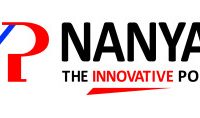Online learning became the go-to alternative to face-to-face classes when the COVID-19 pandemic made it unsafe for students and educators in Singapore to gather in schools. Shifting to online classes presented schools and students with its own set of challenges, such as difficulties in accessing and navigating digital learning spaces, the abundance of distractions at home, and the lack of in-person interaction. In response, government agencies and educational institutions launched programmes that offered additional support to families that were having a hard time coping with this new learning setup.
More than a year and a half after the start of the pandemic, many educators and educational institutions are now of the opinion that online and home-based learning (HBL) will become a permanent part of the educational paradigm, not only in Singapore but also in other parts of the world. This is not just a fearless prediction; in March 2020, the Ministry of Education (MOE) launched the National Digital Literacy Programme (NDLP), which aims to promote the universal adoption of digital learning in local and international schools in Singapore. Here are some of the signs that the said program is well underway and that there’s growing support for making online learning a permanent option for students.

Students Are Being Provided with Personal Learning Devices
One of the primary barriers to the smooth adoption of online learning is the lack of access to personal learning devices. There are households that are unable to provide smart devices and stable internet access to their students, and this can prevent learners from keeping up with their lessons while schools are closed. The MOE stepped in and loaned 20,000 computing devices as well as 1,600 internet-enabling devices to schools, and these gadgets were then distributed to the students who need them.
It’s also in the ministry’s plan to address this issue permanently. Under the NDLP, all secondary school students will be provided with learning devices by the end of 2021. In particular, students who belong to needy households will be given additional support so that they don’t have to use their own resources to acquire appropriate learning devices.
This investment only shows that the government is keen on making online learning a widely available option for students moving forward. By providing learners with their personal learning devices, the MOE can ensure that no one will be left behind in case there’s a need to switch to online learning in the future or if blended learning will become the new norm in Singapore.
Young Learners Are Being Considered for Financial Inclusion Programmes
It’s clear that HBL cannot completely replace the experience of going to school. The environment offered by online learning is vastly different from what students experience when they attend face-to-face classes. Young learners, in particular, are not able to access programmes, like meal plans, that are supposed to help their nutrition, growth, and development if they’re outside of schools. To bridge this gap and ensure that primary students can get the support they need even while they’re studying online, the MOE is pushing for the inclusion of young learners in financial programmes.
To do this, the MOE and other agencies will assist parents in setting up a child savings account where the students will be able to receive financial assistance and monies for awards. The account will neither require a minimum balance nor will it incur fees and charges. This is so that parents can keep it open without any additional resources or effort.
Almost the Entire Curriculum Is Now Available on Online Learning Platforms
Another sign that online learning will remain a permanent option in Singapore is the availability of the entire curriculum on online educational platforms such as the Singapore Student Learning Space (SLS). Students and their parents can use the reference materials and activities on the dynamic learning portal to learn at their own pace and get a better grasp of the ideas that their teachers have presented to them during their online classes. Among the references that students can use to improve their understanding of their lessons are interactive media, animation, video recordings, and assessment materials.
Parents also have the option to enroll their students in online classes that specifically cater to their interests or will enable them to accomplish their future goals. For example, secondary school students who want to improve their foundational knowledge of the English language or their familiarity with online learning environments can join an online learning programme hosted by an international school in Singapore. These programmes can help them catch up to their class or study ahead of their lessons.
Cyber Wellness Is a Lesson That’s Being Emphasised in Schools
As online learning will play an important role in Singapore’s educational system in the future, the MOE has made efforts to emphasise the relevance of enhancing baseline digital competencies among students in Singapore. Starting from their primary years, students will study cyber wellness as part of the Character and Citizenship Education (CCE) programme. This subject aims to empower learners to think critically, differentiate facts from falsehoods, and prevent the occurrence of cyberbullying in online learning environments. Tackling this topic head-on can help educators, students and entire academic communities create a digital space that’s more conducive to learning.
Online learning burst into the scene as a means of coping with the challenges posed by COVID-19, but the preparations to turn this mode of education into a practical option for schools and students predate the pandemic. These signs only point out that digital learning will become a permanent aspect of the new normal world that we now live in.




